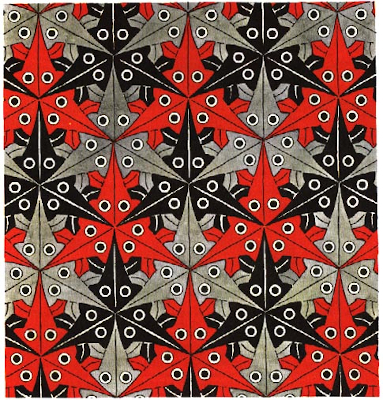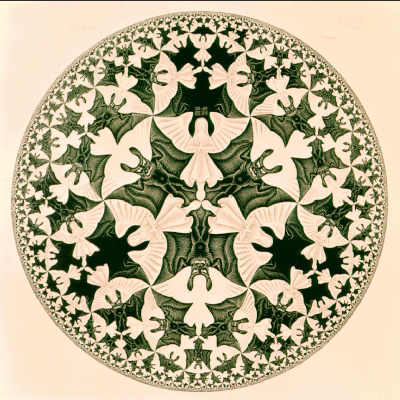Escher’s Subgroups

I use Escher’s tessellations to teach wallpaper groups. Escher is the best painter among mathematicians and the best mathematician among painters. His fame helps energize my class. Plus, he has so many beautiful drawings to choose from.
However, there is another layer to his tessellations. Many paintings are not just a study in wallpaper groups but also in group-subgroup pairs. For example, consider these red/gray/black fishes on the left. There are three distinct points where three different reflection lines intersect. The first point is where three black fishes kiss each other. The other two points correspond to gray and red fish kisses. In orbifold notation, this symmetry group is *333.
But, the same drawing has another symmetry group. We just need to ignore color. That is, we consider all the fishes to be the same. In this case, our three distinct points where three reflection lines intersect become the same point: the point where fishes kiss, regardless of their color. The new symmetry group has an additional element: a 120-degree rotation where three fins of three different-colored fishes touch each other. Thus, the new symmetry group is 3*3.
Escher created a lot of examples of groups and their subgroups using color. But, sometimes, he was more subtle. In one of my previous posts, The Dark Secret of Escher’s Shells, I discussed my favorite Escher’s plane tessellation. In that drawing, the second group appears when we ignore the markings on one of the dark shells.
Here is another spectacular example of a group and subgroup, a tessellation of a hyperbolic plane with angels and devils. Do you see two different symmetry groups in the painting?

Share:
Leave a comment